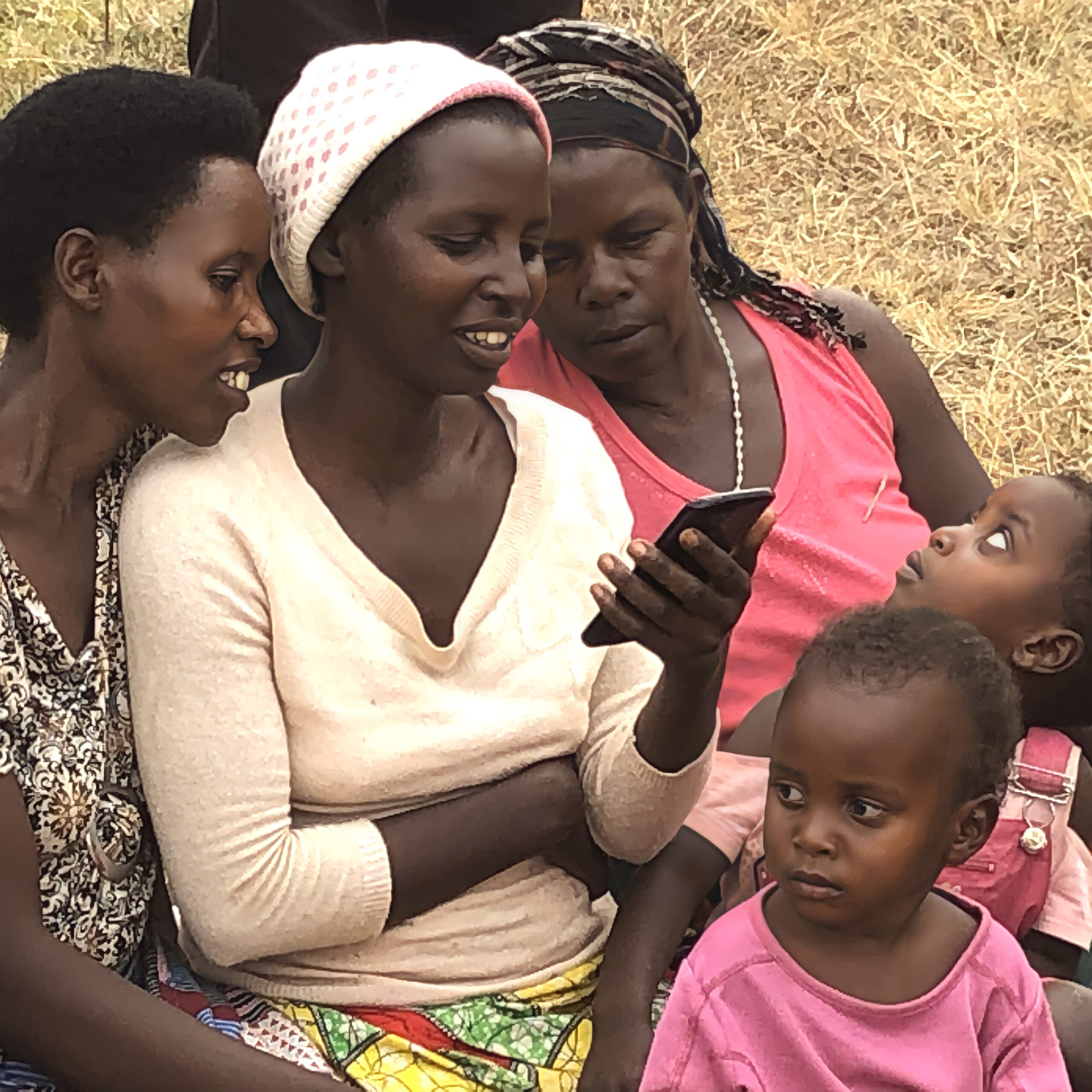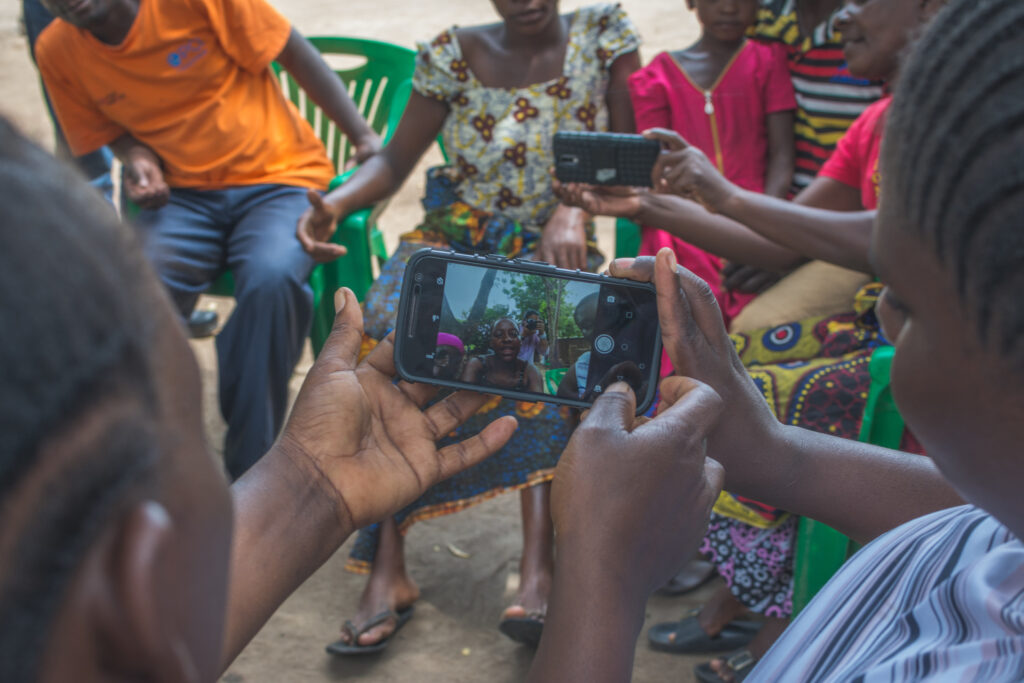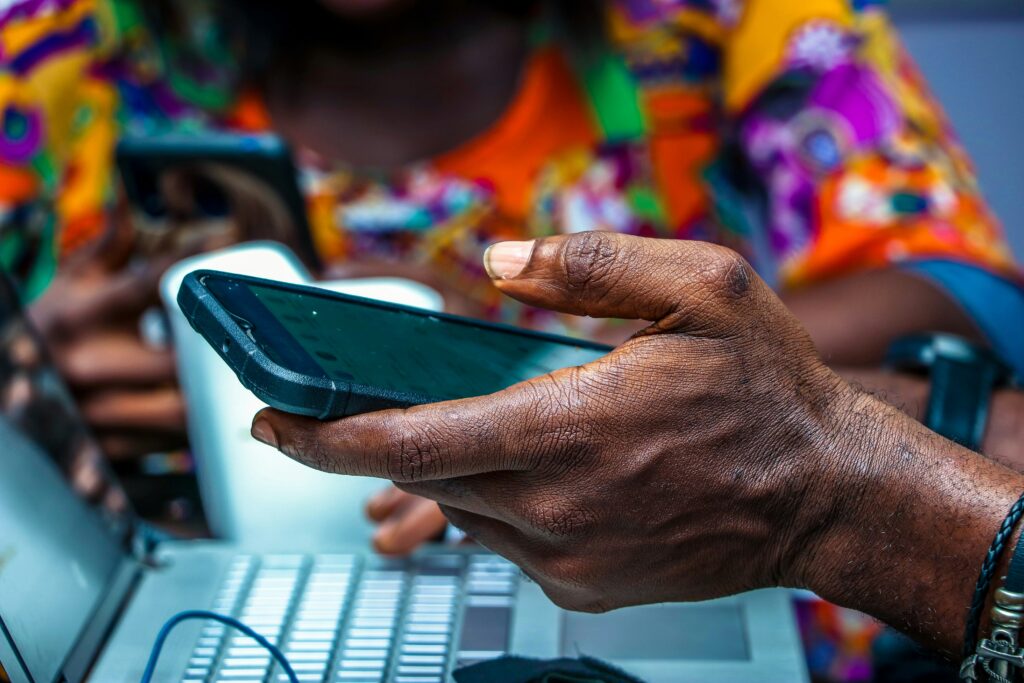Key Takeaways
- Start by writing a clear set of hypotheses you hope to test in your pilot, noting how you will measure them. Make sure everyone on your team understands these goals.
- Select the right project leader, field coordinators, and pilot groups. Mindset and attitude are far more important than tech skills.
- Appoint a “digital champion” in each group to assist with the pilot. This person does not need to have previous experience with mobile technology.
- Set a clear end date for the pilot when you will report your findings and discuss plans for a potential scale out if the pilot was a success.
Take Action
- START planning for digitization now. In a world that is increasingly digital, we should introduce digital solutions to savings groups as soon as they are ready.
- SELECT a technology partner that best meets your goals and has proven experience successfully scaling up DSG projects in similar environments.
- PLAN your pilot carefully using the tips in this article and advice from the DSG Hub community who can share their experiences with you.
New Digital Savings Group Pilots Will Be More Successful if You Follow a Few Proven Tips and Lessons Learned
Planning a digital savings group (DSG) pilot can feel intimidating, especially if it’s your first time. At DreamStart Labs, we’ve supported many pilots of our DreamSave App that have gone on to become large successful projects during scale out. Along the way we’ve learned a few lessons about what goes into a great pilot and what mistakes to avoid. Hopefully some of these tips will be helpful to others as well.
TIP 1: Start with Clear Goals (Write Them Down)
One of the most common mistakes organizations make when beginning a new digital savings group pilot is not starting with a clear set of goals. If your team is new to DSGs, this is an easy mistake to make. Everything is unfamiliar, vendor messaging can be confusing, and finding helpful tools and case studies from others with experience can be daunting. This is one reason DreamStart Labs is so excited about the DSG Hub, which will help all of us learn from each other.
When planning a new pilot, we recommend you start by getting key stakeholders together and writing a list of hypotheses you hope to test. These hypotheses should be in the form of simple statements you want to validate during the pilot, such as:
- “Groups will trust the app”
- “Meetings will be shorter and simpler”
- “Groups will spend less time on recordkeeping”
- “Members will have more trust in the accuracy of their records”
- “Members will feel motivated to save more money”
- “The app will help members set savings goals and know how to achieve them”
- “The app will help members know loan due dates and repay them on time”
- “Groups will have fewer conflicts about transactions and policy enforcement”
- “NGO staff will have easier access to data from groups.”
For each hypothesis, write a simple description of how that learning will be measured by your team during the pilot. For example:
Hypothesis: The app will help members set savings goals and know how to achieve them.
How We Will Measure This: Before the pilot, we will interview selected group members and ask them three questions: “Do you know your current savings?”, “Do you have a specific amount you want to save this cycle?”, and “Do you know how much you need to save each meeting to achieve your goal?” At the end of the pilot, we will ask the same three questions and record any changes.
When conducting before-and-after interviews, be sure to include a cross-section of group leaders, regular group members, field coordinators, and other project staff. Each of them will have different perspectives that could be insightful in understanding the pilot results. If you have the budget to conduct a full baseline-endline study that’s great, but even a set of simple informal interviews and measurements can go a long way.
Our biggest advice is to keep the process as simple as possible. The main goal is to align everyone on your team around a clear set of learning objectives from the beginning, then use those same hypotheses to assess your findings at the end.
TIP 2: Choose an Enthusiastic Project Leader (Attitude > Technical Skills)
Another common mistake organizations make when piloting DSG solutions is choosing the wrong person to manage the project. Since this is a technology pilot, it may be tempting to have someone on your technology staff lead the effort. While that may be the right choice, technical skills are not the most important asset when managing a DSG pilot. The most important skills to look for in a DSG pilot project leader include:
- Enthusiastic about trying new innovations
- Great listening skills (ability to uncover concerns and address them upfront)
- Positive attitude with a proven ability to influence others and get them excited
- Good project management skills
- Ability to manage unexpected challenges
- Great communication skills.
Like anything new, you should assume your pilot will have its share of challenges along the way. Having the right project leader will make it far easier to address these challenges, keeping everyone focused on the goals and collaborating with all stakeholders as you go.
TIP 3: Use Your Best Field Coordinators (Mobile Skills Help a Lot Here)
Having strong field coordinators on a DSG pilot can often be as important as choosing the right pilot groups. Good field coordinators will be more astute in managing pilots, better at communicating with users, and more helpful in measuring results. While technical skills should not be required for an NGO to run a DSG pilot, you will want to assign pilots to field coordinators who are regular mobile users. If you’re testing a digital recordkeeping solution that uses a shared smartphone, make sure you have field coordinators who are comfortable using tablets or smartphones. If you’re testing a digital wallet solution, you’ll want field staff who have experience conducting mobile money transactions.
TIP 4: Choose the Right Pilot Groups (They Will Become Your Digital Evangelists)
When starting a new digital pilot, it’s important to seek pilot groups that have a positive attitude. You want to start with groups that are excited to test new innovations and willing to take on the challenges of pioneering a new solution. After the pilot, these groups will become advocates for future expansion, so it’s also helpful to select groups with charismatic leaders as they will likely be promoting the new digital solution with other groups when you reach the scale out phase.
You’ll also want to consider including pilot groups that are representative of your broader population. One of the top goals of a digital pilot is to learn what it will take to scale out a digital solution more broadly. For example, if some of your groups have only women members and others are mixed-gender, you may want to include both types of groups in the pilot to see if gender makes a difference in how groups respond to the digital solution.
TIP 5: Appoint Digital Champions (Curious and Unafraid)
When we do new pilots with our DreamSave app, we always recommend that each pilot group designate 1-2 members as “digital champions” to assist group leaders with the new technology. These digital champions are trained alongside the other group leaders from day one. In some cases, these may even be children of existing group members.
It doesn’t really matter whether the digital champions have previous smartphone experience or not, although this is certainly helpful. The bigger key is that they are less risk averse, more curious, and more accepting of new technologies in general. When something unexpected happens, they are also more likely to experiment and ask questions.
TIP 6: Consider a Mix of Mature and “Born Digital” Groups
Most organizations assume DSG pilots should focus on mature groups that already understand the savings group model and have been operating together for some time. While this can work well, we encourage organizations to consider adding some “born digital” groups to their pilots as well.
“Born digital” refers to newly formed groups that start with digital recordkeeping rather than with paper ledgers. These groups have no internal comparison for the advantages of going digital, but they are often faster to train and don’t have the potential dependency on manual paper methods. While “born digital” groups still need to understand the principles of savings groups, they do not need weeks of practice on manual calculations as those functions will be handled automatically in the digital app. This typically leads to shorter and more efficient training, but may require some upfront planning on curriculum and training methods.
Mature groups that have completed at least one saving cycle tend to have established trust and social dynamics among members. They also understand the challenges of manual recordkeeping and can more quickly see the benefits of going digital. The biggest potential challenge of mature groups is that they are more likely to be set in their ways. This can sometimes lead to groups that resist change or are slower to embrace a new app.
For more insights on this topic, please see the Digital Savings Group Research Brief: Comparing “Born Digital” and “Paper-to-Digital” Groups. This brief shares findings from a six-month study conducted by the International Center for Research on Women (ICRW) using our DreamSave app with women in rural Tanzania.
TIP 7: Start with 20-50 Pilot Groups (Except with New Vendors)
One common mistake some organizations make when piloting a new DSG solution is testing with only a few groups. While it may make sense to run a quick test with 1-2 groups to get a general feel for how a product works, you won’t learn enough in a pilot this size to prepare you for a broader scale out later. To be effective, DSG pilots need to include enough groups to give you a feel for how your broader savings group population will embrace the new technology. If you test with too few groups, you may not learn enough about your hypotheses to plan for future scale out.
With our DreamSave app, we typically recommend partners start with about 20-50 pilot groups. This tends to be enough to get a representative sample for learning purposes, without being too big to manage. Any DSG vendor with a proven track record and a reasonably big base should be comfortable supporting pilots of this size. If a vendor is new or has limited experience, you might need to start smaller to ensure they are able to support it.
TIP 8: Location, Location, Location (Keep it Simple)
During a DSG pilot, you will want your field coordinators to have lots of interaction with pilot groups. You’ll also want to conduct regular “pilot progress” sessions where field coordinators meet with each other and the project manager to share observations, discuss challenges, and adjust plans as needed. If your pilot groups are distributed too broadly, it could be impractical for the teams managing the pilot to visit all the groups regularly and collaborate with each other throughout the pilot process. These regular meetings are key to learning, so make sure you plan your pilot regions to make this as simple as possible.
This doesn’t mean you can’t pilot in multiple regions. In many cases, comparing the response in different areas may be one of the key hypotheses you’re testing. If multiple regions are chosen for the pilot, make sure your trained staff are visiting pilot groups regularly to watch and learn from them, and that pilot coordinators from different regions are meeting with each other regularly to compare notes.
Similarly, it’s best to begin with groups where mobile network connectivity is reasonably reliable. When choosing a product, make sure to check whether it requires network connectivity or if it operates offline. If the product can operate offline but benefits from occasional data connection (for new versions or to backup data), pilot groups should be able to reach a network where their group meets or within a short walk.
It may be tempting to pilot with the hardest to reach, “last mile” groups because you want to support those who are most underserved. While this is a noble goal, we generally encourage organizations to choose more accessible groups for a pilot. Choosing groups that are near staff and have reliable connectivity means they will get the maximum support from organization staff and vendor support teams. Staff and groups will be more excited about digitization if they feel successful and you will learn essential lessons that will help you scale to the last mile with more ease and efficiency post-pilot.
TIP 9: Most Pilots Should be 3-4 Months (Set a Clear End Date)
Some organizations new to DSGs assume they need to run pilots for an entire cycle. While this can work, it is generally not necessary. For groups that meet weekly or bi-weekly, the typical pilot should last about 3 months. With sufficient planning and clear goals, this should be enough time to assess how the groups are adopting the new technology and learn what will be needed for a larger scale out. If groups meet monthly, pilots might need to be a bit longer to ensure enough meetings have occurred for proper learning.
Whatever you do, don’t make the mistake of running an indefinite pilot with no clear end date. If a pilot hasn’t accomplished its learning goals by the scheduled date, you can always extend it, but lengthy pilots with no set end are rarely a good idea. Note that by “end date” we don’t mean groups should stop using the DSG solution at the end of the pilot. This only means that your team should have a clear timeframe to assess the findings of the pilot, measure the hypotheses you set out to validate, and discuss potential next steps.
TIP 10: Get Started Now (Just Do It)
Perhaps the biggest mistake NGOs make when it comes to DSGs is doing nothing. In a world that is increasingly digital, we should introduce digital solutions to savings groups as soon as they are ready.
Moving to any new technology will have its challenges, especially in the early days. But that shouldn’t be a reason for not moving forward. Teaching our children to ride a bike or open a bank account also takes time and includes risks, but few of us would argue for holding them back from these experiences.
The good news is that resources like the DSG Hub now exist, so learning from others is easier than ever. Whatever you do, don’t wait. Join the community, read the resources, follow the newsletter, engage with other members, talk to vendors, and get started on your own digital journey today. You’ll be glad you did!
Do you have other tips and tricks from your experience running DSG pilots? If so, please share them in the comments below so we can all learn from each other!
Photo credit: DreamStart Labs




